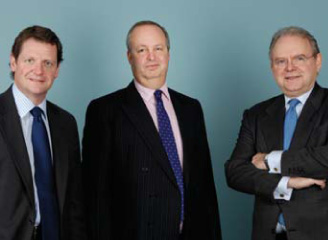Accountability
Corporate Governance
- The Audit Committee makes recommendations on the reporting, control, risk management and compliance aspects of the directors’ and the Group’s responsibilities, providing independent monitoring, guidance and challenge to executive management in these areas. Its aim is to ensure high standards of corporate and regulatory reporting, controls and compliance, in the belief that excellence in these areas enhances the effectiveness, and reduces the risks, of the business.
Audit Committee report
Terms of reference
The terms of reference of the Audit Committee (the Committee), which is a joint Committee of the boards of the Company and its UK operating subsidiary, Amlin Underwriting Limited (AUL), enable it to take an independent view of the appropriateness of the Group’s accounting policies and practices. It also considers the appointment and fees (both audit and non-audit) of the external auditors, who have unrestricted access to it, and monitors the Group’s compliance, internal control and risk management procedures. The Committee’s terms of reference, which take full account of the Smith Report on the role of audit committees, are available in the 'Corporate Governance' section of 'Investor Relations' on the Company’s website or from the Company Secretary on request.
Membership, meetings and attendance
The Committee’s membership and number of meetings and attendance level during the year are set out in the 'Board and Committee membership and attendance' section of the Board Corporate Governance statement. Throughout the year there have been a number of members with recent and relevant financial experience, including Mr Buchanan.
The Chairman of the Company, the Group Chief Executive and the Finance Director usually attend the Committee’s meetings, as does the Chief Risk Officer and the head of Internal Audit. At least once a year the Committee meets, both on its own and with the external auditors, without any executive management present. The Committee also meets privately with the head of Internal Audit, who has a private line of communication with the Committee Chairman.
 L – R: James Illingworth,Chief Risk Officer, Fraser White, head of Internal Audit and Nigel Buchanan, Chairman of the Audit Committee
L – R: James Illingworth,Chief Risk Officer, Fraser White, head of Internal Audit and Nigel Buchanan, Chairman of the Audit Committee
Activities
In addition to reviewing the Company’s interim and preliminary results statements and its Annual Report, the Committee reviewed and reported to the Board on: the managed syndicate’s Annual Report; the external auditors’ engagement and service plan; the plans, work undertaken and recommendations made during the year by the Group’s Internal Audit department, including reports on Amlin Bermuda Ltd; the external auditors’ independence and the extent and reasons for them providing non-audit services (a breakdown of the fees for which is set out in note 13 to the Accounts); the work of the Risk Assessment & Monitoring department and the executive Risk Committee; AUL’s Individual Capital Assessment before it was submitted to Lloyd's; the Group’s 'whistle blowing' procedures; and other related matters. Reports were received from the external auditors in respect of each set of financial statements, highlighting the material judgmental areas, which were then discussed by the Committee with executive management and the auditors at the relevant Committee meeting.
Procedures operated throughout the year for the approval of any appointments of the external auditors (or its associated entities) to provide nonaudit services. The Committee remained satisfied that the provision of such non-audit services by Deloitte & Touche LLP has not compromised the auditors’ independence.
Details of the Committee’s role regarding internal control issues are set out in the Board internal control statement within the Board Corporate Governance statement.
The Committee monitored the Group’s compliance with Financial Services Authority, Lloyd’s and other regulatory requirements and recommendations. Reports to the Committee included summaries of the findings of internal audit reports, enabling members of the Committee to question the executive responsible for internal audit on such reports and to monitor the measures taken by management to respond to issues raised.
During the year the Committee conducted a selfevaluation of its composition, procedures, contribution and effectiveness, the conclusions of which were agreed and reported to the Board early in 2008.
By Order of the Board, on the recommendation of the Audit Committee
C C T Pender Secretary
27 February 2008
